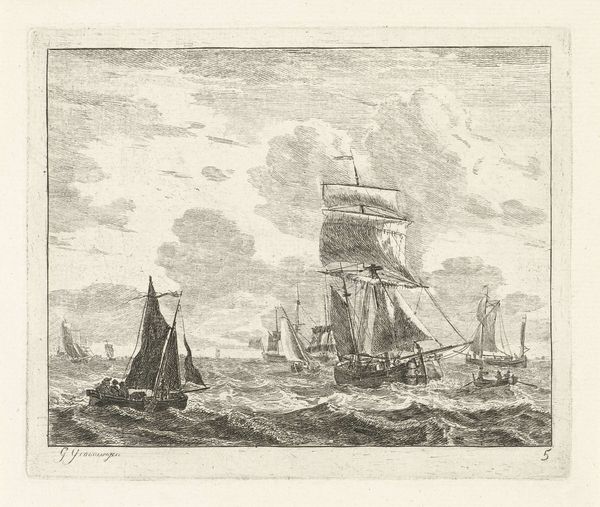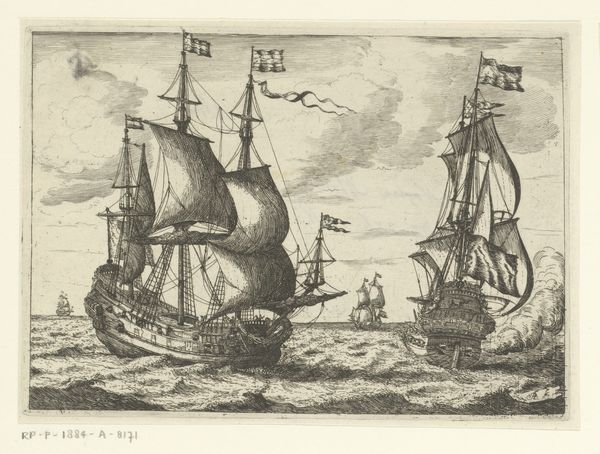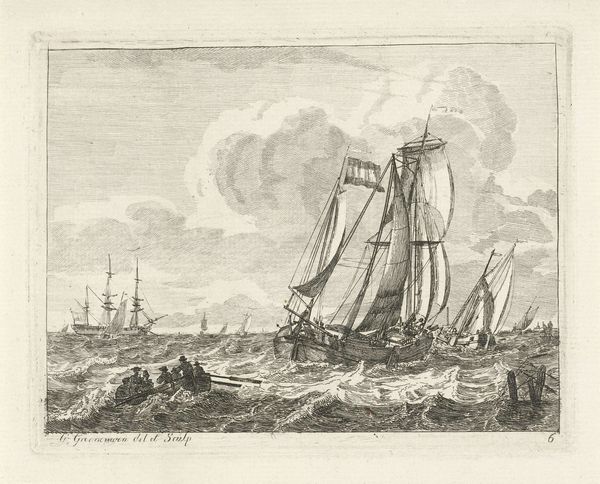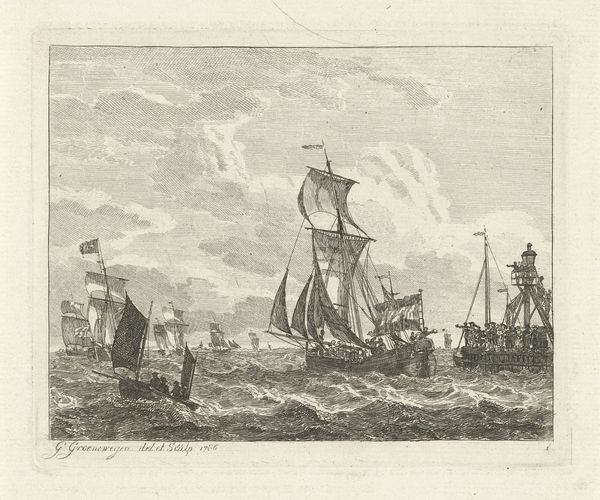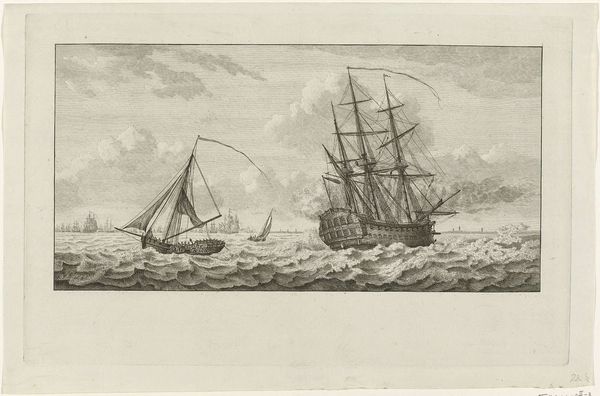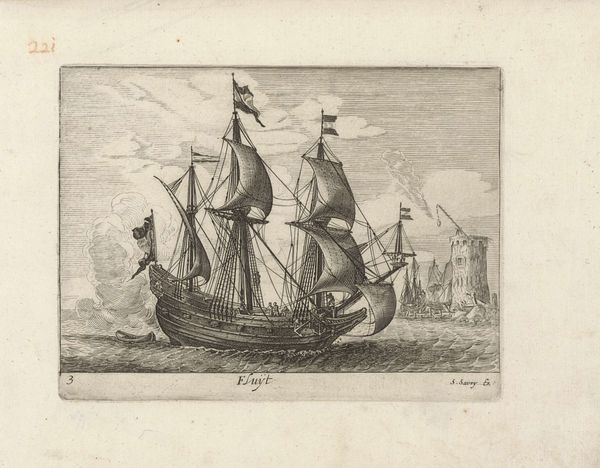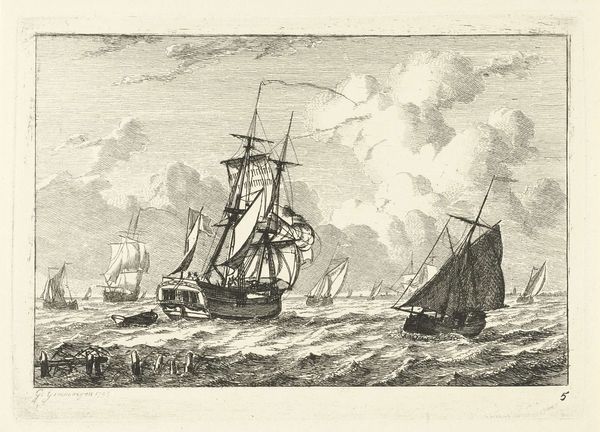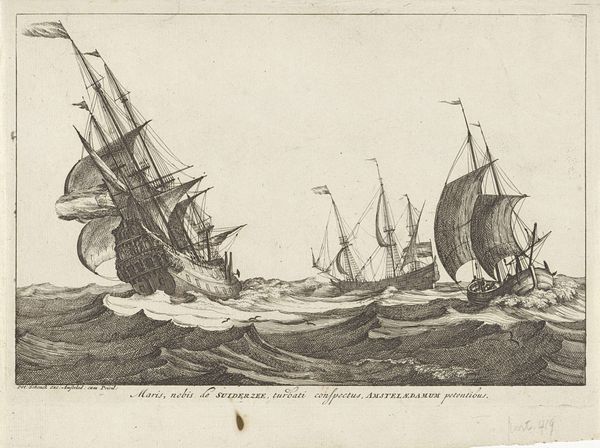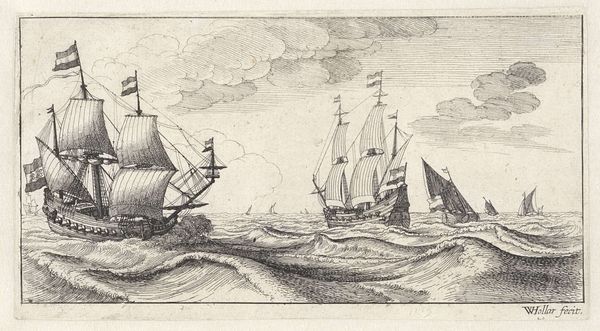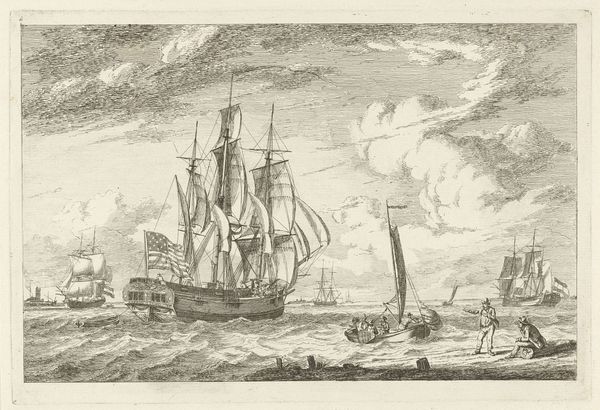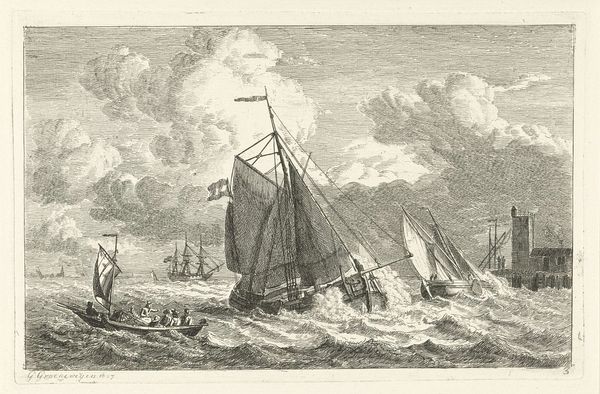
Dimensions: height 120 mm, width 155 mm
Copyright: Rijks Museum: Open Domain
Editor: So here we have "Zeilschepen op onrustige zee," or "Sailing Ships on a Rough Sea," a print made in 1786 by Gerrit Groenewegen. It’s pretty small, but there’s a real sense of movement – you can almost feel the waves. What jumps out at you when you see it? Curator: Well, first, it’s fascinating to consider the process itself. As a print, this image was inherently reproducible, fitting into a growing market for images of maritime activity and trade. The labour involved in creating the printing plate, the type of ink used, and the paper itself - all these materials would have influenced both the cost and availability, right? Think about the distribution networks. Editor: Definitely. I guess I was focusing on the artistry, but the materials…it does change the context. How readily available would something like this have been? Curator: Exactly. Was it intended for a wealthy merchant’s collection, or perhaps something for a broader, emerging middle class with a fascination for maritime adventures? Consider also the ships: what goods were they carrying, for whom, and at what cost to the sailors or enslaved people involved in their journeys? The material reality of trade becomes interwoven with the image. Editor: So, it’s less about the romantic depiction of the sea and more about what it represents in terms of industry and labour? Curator: Precisely! It's not just about the artistic skill. It's about the networks of production and consumption. Thinking about the material history lets us see the image in a broader social and economic landscape. Editor: Wow, I hadn't considered all of that! Looking at the ships and the sea… I’m starting to think about all of the people who relied on them. Curator: And how that reliance shaped their lives, and how Groenewegen's work participates in – or perhaps even subtly critiques – that system. The image isn't just an image, it's a piece of material culture, tied to a specific time and place. Editor: Thanks; that gives me a totally new way of looking at this print! Curator: Indeed, looking at the tangible provides more nuance.
Comments
No comments
Be the first to comment and join the conversation on the ultimate creative platform.
